|
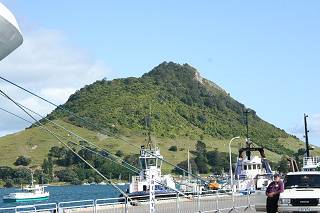
|
Our ship came into the vicinity of Tauranga and
docked at the foot of Mt. Maunganui. On the left is
a shot of the small peak and you can see the bow of
the ship in the upper right. Behind our ship
stretched a large harbor area with docks filled with
containerized freight. Looking toward Maunganui and
the little village at its base, you would not
imagine that you are in a major industrial and
shipping center in New Zealand. |
|
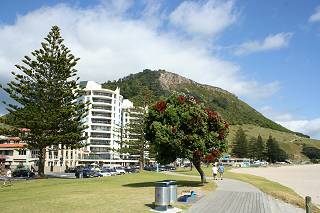
|
The stretch of land between the mountain and the
mainland is narrow and forms a peninsula with
sweeping beaches. In this picture we are east of the
ship and across the Maunganui village. All along the
beach are found hotels and apartment buildings like
the one in this picture. They are neat, clean and a
short walk away from bright blue sea. |
|
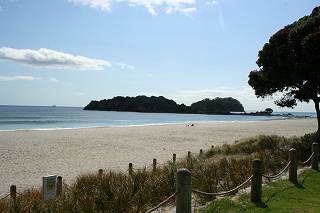
|
We
got away from the crowds and tours of the ship and
contracted with a driver for a tour. The coastal
area here is very inviting and the beaches are
pristine. No homes or hotels front on the water. The
beaches belong to all the people. |
|
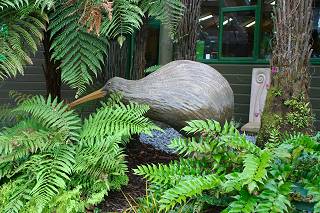
|
Not far from Tauranga was a place called Te Puke (tay
POOH-kay), the "kiwi capital of the world."
The kiwi is emblematic of New Zealand.
But, of course, "kiwi" can refer either to an animal
or a fruit. Te Puke is the center for kiwi, the
fruit.
The
fruit was first grown for commercial export in the
1950s. Originally known as "Chinese gooseberries,"
the name was changed to make it more marketable in
the US. NZ growers simply called it "kiwifruit," and
the name has stuck as simply "kiwi." |
|
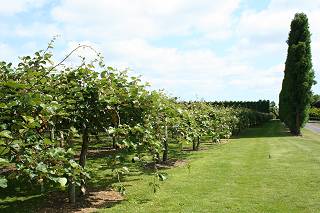
|
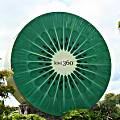
At a place called Kiwi360, a visitor and information
center, we got to see the famous
fruit actually growing.
And, of course, we got to
sample some of the product - off the vine, as
slices, as a juice, and as ice cream! |
|
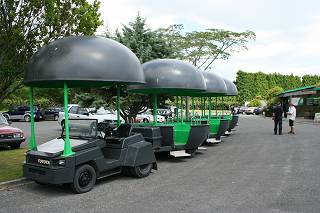
|
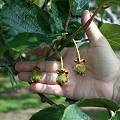
The kiwi center even has a kiwi tram to transport
visitors around the vineyard. Kiwi vines are male
and female, with one male plant required for 8 or 9
females. The vine supports must be very sturdy to
support the tons of fruit that will grow on each
vine. Tommy Valenta held some of the growing fruit
buds in his hand. |